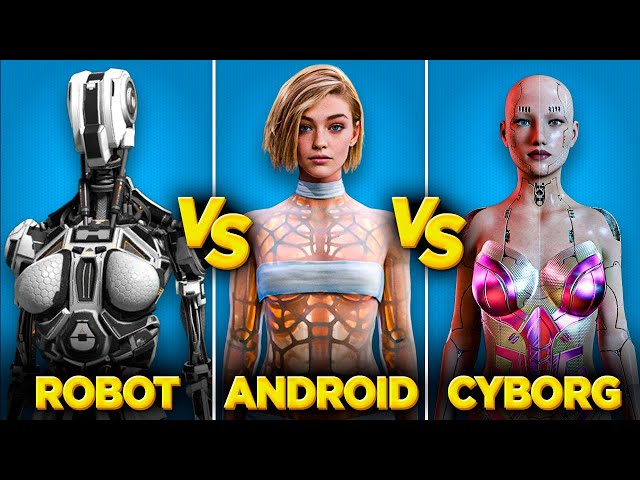Exploring the Differences Between Robots, Androids, and Cyborgs
Robots, androids, and cyborgs are intriguing subjects that have fascinated humans for decades, especially in the realm of science fiction. However, as technology advances, these once-fictional entities are becoming an integral part of our reality. This article delves into the differences between these fascinating technologies, their current applications, and potential future developments.

Understanding Robots
The term “robot” originates from the Czech word “robota,” meaning “forced labor.” Robots are machines designed to perform tasks that are often laborious or risky for humans. Over time, they have become more accurate, reliable, and cost-effective compared to their human counterparts.
In science fiction and toys, robots often have humanoid features due to humans’ innate tendency to see patterns and faces. However, in everyday life, robots are typically functional and inspired by human or animal movements rather than appearances.
Most robots are controlled by computer programs and have limited functionality, performing specific tasks as programmed without independent thought. However, recent advancements have enabled some robots to learn, recognize patterns, and adapt, blurring the lines between robots and artificial intelligence (AI) software. For example, Siri can communicate with users through AI software, but lacks mechanical parts, making it a virtual assistant rather than a robot.
In essence, robots are mechanical devices with limited programmed intelligence. Though some may argue that future developments could lead to sentient robots, such advancements remain a long way off.
The Concept of Androids
The term “android” refers to robots specifically designed to resemble humans. Derived from the Greek prefix “andro,” meaning “man,” androids are built to walk, talk, and interact socially, often with superior AI capabilities compared to standard robots. Although the term traditionally refers to male-like robots, female versions are called “gynoids.”
Androids are depicted in popular culture as sentient beings with human characteristics. However, the primary requirement for an android is its humanoid appearance. Sentient androids do not currently exist, but advancements in AI are steadily pushing the boundaries of what these robots can achieve.
Defining Cyborgs
Cyborgs, or cybernetic organisms, are hybrids of biological and mechanical parts. Unlike robots and androids, cyborgs are living beings with integrated mechanical components. The term “cybernetic” refers to the communication between organic and mechanical parts, allowing for enhanced capabilities.
In popular culture, cyborgs are often portrayed as humans with robotic enhancements, granting them special abilities. Alternatively, they can be depicted as organisms infiltrated by nano-bots, taking control similarly to a virus. While these scenarios may seem fictional, current scientific advancements are making cyborgs a reality. For instance, artificial limbs that respond to the human nervous system are being developed for amputees, effectively making them cyborgs.
Key Differences
- Robots: Autonomous machines designed to perform specific tasks without independent thought. They can range from manufacturing arms to ATMs and elevators.
- Androids: Robots built to resemble humans, equipped with advanced AI for social interaction. They must look humanoid but are not necessarily sentient.
- Cyborgs: Living beings with integrated mechanical parts that enhance their capabilities. Unlike robots and androids, cyborgs are organic and can potentially procreate.
Conclusion
Robots, androids, and cyborgs each have unique characteristics and applications. Robots perform specific tasks efficiently, androids aim to replicate human interactions, and cyborgs enhance biological capabilities with mechanical parts. As technology continues to evolve, the lines between these entities may blur, leading to new and exciting possibilities in both science fiction and reality.